Veja's New Running Shoe Subtracts the Plastic - WIRED |
- Veja's New Running Shoe Subtracts the Plastic - WIRED
- Veja Debuts Running Shoes - The Wall Street Journal
- Recommender 10 shoes brands that reduce your carbon footprint - Fast Company
- This is the man who makes shoes for the biggest feet in the world - Guinness World Records
| Veja's New Running Shoe Subtracts the Plastic - WIRED Posted: 19 Sep 2019 05:00 AM PDT The guts of the shoe were a little trickier. Making running shoes is a lot like baking, says Arnaud Dabir, a project manager at Veja who worked with material scientists on the shoe. Each component is a precise mix of ingredients that must blend together for the end product to work. "Sometimes innovation isn't inventing something new, it's re-thinking thoroughly established processes," he says. "Think of a gluten free chocolate cake—you take off a few classical ingredients and add new ones. In the end you still have a chocolate cake, as good as or better than the other ones, but made in a different way." There's the outsole, the hard rubber exterior that provides durability and grip; and the inner sole, a firmer insert that gives structure to the shoe and cradles the foot. Sandwiched between the two is the midsole, the cushy layer of foam that provides support, absorbs impact, and gives the shoe a springiness. All of these components are commonly made from plastic, and every company has its own tightly held recipe for its foam's fit and feel. The secrecy is understandable—a slight tweak to the formula can result in major energy savings and faster times for runners. The Condor is less performance-based than something like Nike's marathon-ready kicks, which meant Veja could experiment with some of the materials in its sole. Kopp says Veja's material scientists spent three years searching for a mix of ingredients that would create a strong outsole that wasn't pure synthetic rubber. In the beginning, they tried using 100 percent wild rubber tapped from the Amazon, but found the shoe was too heavy. Adding air to the natural latex made it lighter but far less resilient. "The sole would last for five runs and then it would give into the weight," Kopp explains. Veja landed on a mixture of 30 percent wild rubber, 39 percent synthetic rubber, and 31 percent rice husk that makes the sole light but firm. The midsole, too, is a combination of bio-based and synthetic materials. Fifty-five percent of the midsole is made from regular EVA—a modern, if environmentally destructive, marvel of material science known for its lightweight bounciness. For the other half, Veja created a bio-based foam made from banana oil (for flexibility), rice husk (for firmness), and sugarcane, the latter of which is quickly becoming a common replacement for petroleum-based materials like EVA. "What's great about sugarcane is that it's not different than the regular EVA," Dabir says. "We have the same benefits and limitations." For the insole, Veja concocted a mixture of regular EVA, jute, wild rubber, recycled plastic bottles, and recycled EVA that comes from the scraps generated during production. "In the recycling process, the EVA loses a part of its qualities, so to maintain the high level of performance, we limited its share to 8 percent," Dabir added. |
| Veja Debuts Running Shoes - The Wall Street Journal Posted: 18 Sep 2019 05:35 AM PDT  Since Veja's U.S. debut in 2014, the company's sneakers—mostly of the white low top, goes-with-everything variety, like Keds or Nike Cortez, sometimes with a splash of playful color on the pull tab or rubber V logo—seem to be everywhere. They're fixtures of New York City's sidewalks in neighborhoods like Soho and Park Slope, whether on an Instagram model or a mom pushing a stroller. Celebrities like Emily Ratajkowski, Emma Watson and Meghan Markle have been spotted wearing them. "We always smile when we see an 85-year-old woman wearing the shoe in L.A.," says Veja co-founder Sébastien Kopp. And in cities like Paris, London and Tokyo, Vejas have been popular since the original run of 5,000 pairs sold out in 2005. To date, according to the company, Veja has sold 4 million pairs of shoes in total.  Kopp credits Veja's enduring popularity in part to a decision he and co-founder François-Ghislain Morillion, who've known each other since 1993 when they met during high school in Paris, made at the company's beginning: no advertising. Not having an advertising budget meant they could sell their shoes at the same price points as bigger brands, even though their materials and production were more expensive. (Their core offerings retail from $95 to $160.) Kopp says that the lack of advertising also means that customers aren't overwhelmed by their brand messaging. "That's what I like about not doing advertising, you don't harass people," he says. "The only way to see [the shoes] is on people's feet or maybe in a magazine article." They don't do celebrity or influencer seeding, gifting shoes only to friends, and don't seem to care much about famous people either way. When Markle was spotted in a pair during her first royal tour with Prince Harry in Australia, Kopp says, he thought she was a singer. Now Kopp wants to get his company's running shoes into the world. "Am I excited? No, I'm not excited," he says about the upcoming launch. "I'm impatient." After all, he and Morillion, both 41, have been working on them for a long time, about four years, hiring a dedicated team of specialized engineers and enlisting 80 testers around the world. Their goal is to create the first post-petroleum running shoe, and right now they're a little over halfway there. Running shoes contain a lot of plastic, which is made from petroleum. The Veja team isn't the first to identify plastic as a problem. Since 2015, Adidas has been selling sneakers made from recycled ocean waste in partnership with environmental organization Parley for the Oceans. Last spring, Nike announced that 75 percent of its shoes and apparel contain "some recycled material." Veja's new shoe, the Condor, debuts September 19 and is made of 53% biological-based materials—the Condor's midsole, for example, contains banana oil, sugar cane and rice husk, in addition to regular E.V.A., aka ethylene vinyl acetate, a type of plastic. "It's only the first step," Morillion wrote in an email. "We're working every day to reduce the use of plastic." The running shoes, which come in six colors, will retail for $150 and be available at 60 stores worldwide.  The first shoe Veja launched in 2004 was made of canvas and rubber. Kopp and Morillion say they traveled to the Amazon to find producers—organic cotton growers and wild rubber tappers—and paid them fair trade prices. They found factories to produce the shoes elsewhere in Brazil. Over the years, their materials became more experimental: vegetable-tanned leather debuted in 2008, B-mesh, a material made out of plastic bottles, in 2014. (Recycled plastic bottles are part of the Condor's upper, insole and lining.) Earlier this year, Veja launched their Campo sneaker, which looks like a leather shoe, but is actually made from cotton, specifically canvas waxed with a compound made from corn waste. Even though sustainability has been a core part of the company since its beginning, Kopp estimates that 80% of their customers don't know about it. They just like the shoes. Are the co-founders trying to change that? "No, we just let the information be available," he says (their website goes deep into materials and means of production). "This is maybe one of the biggest problems in our society, everybody is trying to convince everybody. We don't push information on people." Stylist Sarah Slutsky, whose clients include Emma Watson, Elizabeth Olsen and Cynthia Erivo, says she styles lots of her clients in Veja. She discovered the shoes four or five years back when she was hunting for brands in the sustainable space. "They love the look," she says of her clients, "and then they're even more excited when they hear the story."  Another part of Veja's strategy has been to take things slowly. For the company's first two years, there was no website other than a placeholder landing page—Kopp and Morillion were too busy traveling back and forth between Brazil and Paris to create a proper one. For 10 years, they refused requests from stores and clients to make Vejas available in the U.S. because they didn't have the necessary production capacity. Up next is another collaboration with Rick Owens. During his Fall 2019 men's show, some models wore co-designed Veja sneakers on the runway. It's the company's second partnership with a luxury designer this year following a March capsule collection with Christophe Lemaire. Owens reached out to the co-founders after researching sustainable shoes. "He's a big fan," says Kopp. "He's very picky and he knows what he wants to do, but we are like this too. He's a cool person." Copyright ©2019 Dow Jones & Company, Inc. All Rights Reserved. 87990cbe856818d5eddac44c7b1cdeb8 |
| Recommender 10 shoes brands that reduce your carbon footprint - Fast Company Posted: 19 Sep 2019 07:00 AM PDT Footwear manufacturers worldwide produced an estimated 23.3-plus billion pairs of shoes in 2018. And according a MIT-led life-cycle assessment, each pair of traditional trainers accounts for 30 pounds of carbon dioxide emissions released into the atmosphere. That's the equivalent of keeping a light on for a week straight or burning a gallon and a half of gasoline. The bulk of those emissions come from the manufacturing process, but many are also released during the acquiring and extracting of raw materials, such as the crude oil that's used to make synthetic fabrics. A few companies, however, are rethinking their supply chains—and seeking sustainable and innovative materials that make shoe production greener from the get-go. 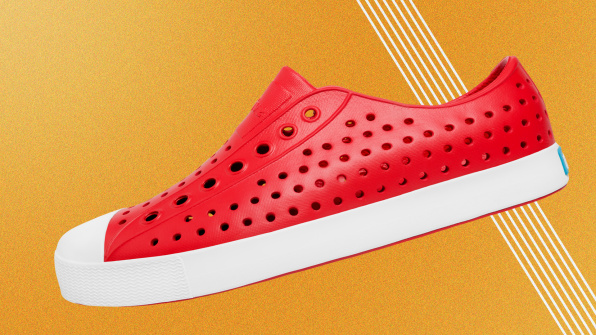 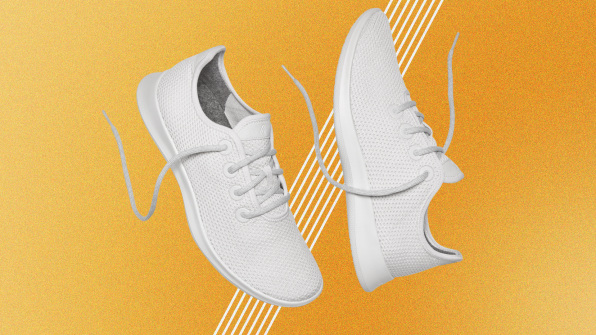 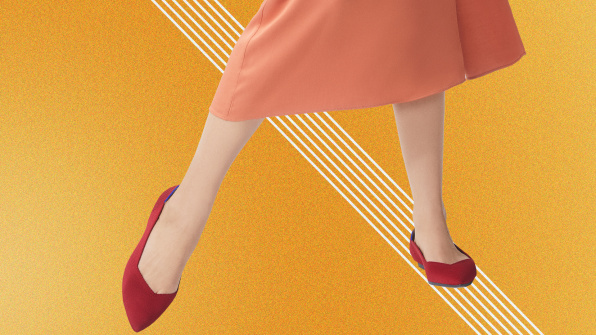 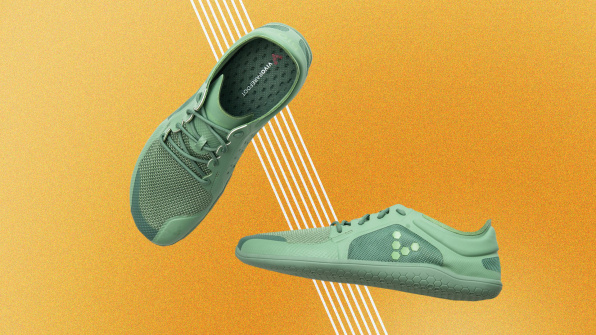 Ecoalf, the first fashion brand in Spain to become a B-Corp, stamps nearly all of its shoe designs with a line that reads, "Because There Is No Planet B." The company uses recycled plastic and nylon in almost all of its designs, but the Shao sneaker ($180) goes even further: the shoe is constructed using only recycled waste gathered from the ocean and rivers near the Mediterranean Sea. Five recycled water bottles are spun into the yarn that creates the sleek knitted upper, while the outsoles are constructed from algae. 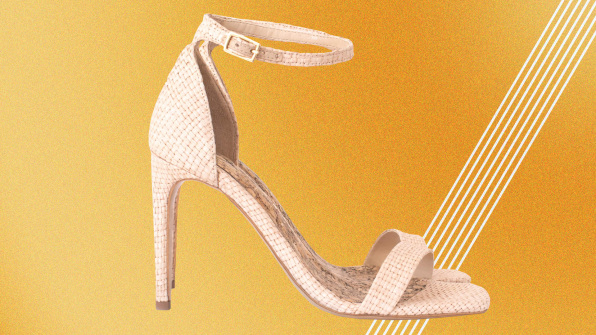 Saola Shoes, a member of 1% Percent for the Planet (an organization whose members contribute 1% of annual sales to environmental causes), has based its entire design method around sustainable materials. The Niseko sneaker boot for men ($120) and the Tahoe ($110) model for women are made with recycled polyester uppers, algae-foam outsoles (made by BLOOM foam), and natural cork insoles. 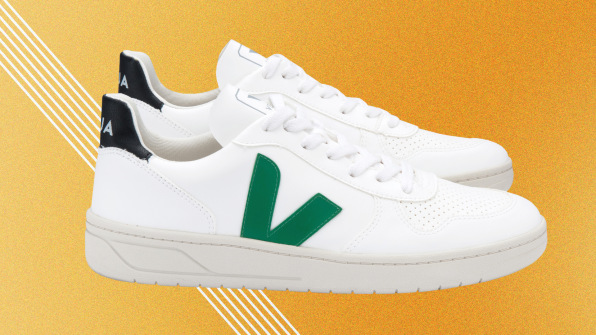 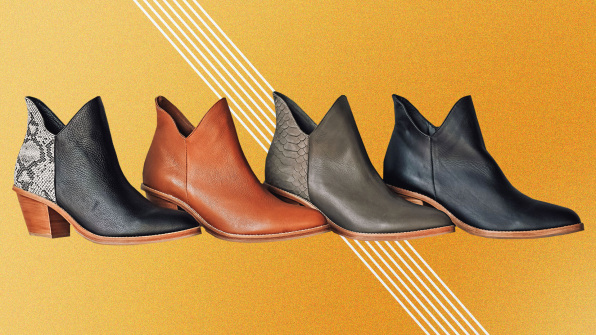  Fast Company may receive revenue for some links to products on our site. |
| This is the man who makes shoes for the biggest feet in the world - Guinness World Records Posted: 19 Sep 2019 03:30 AM PDT Everyone has heard of the Guinness World Records titles like the largest feet on a living person or the tallest man living. But have you ever thought 'where do they find shoes big enough to fit their record-breaking feet'? German shoe manufacturer, Wessels, established in 1745 has specialised in making customised shoes for the world's tallest people for 40 years. Although Wessels was established almost 275 years ago, the shoe manufacturer is still family run. Recently we caught up with current owner Georg Wessels to learn more about his passion for helping those with the biggest feet in the world.
Why did you begin custom making large shoes? My father already made shoes in large sizes and we are now specialised for 40 years in this matter. Ever since then, we make shoes for the tallest people in the world. It was our task to supply the people in need. We discovered that the people who are affected by acromegaly, really need good fitting shoes. That is one of their biggest problems and we try to help them. What's the best thing about your job? It is a pleasure for us to help them and it is also very nice to know that we have a lot of friends all over the world.
What was it like meeting Jeison Orlando Rodríguez Hernández, record holder for largest feet on a living person (male) and the tallest man in the world, Sultan Kosen? I met Jeison Rodriguez in 2013 when he was only 16 years old. For me it is very normal to meet any giant and help them and I'm always very happy to meet new friends. They become like family and they call me their family as well. I can say this for Jeison, Sultan Kösen, their families and many more.
Do you have any other highlights from the shop's history? I can recall a story about a real camel, which had problems with its feet. The owner had seen a film about us and contacted us. We were his last hope since no one else was able to help. This was in 2005. The shoes were a success and a picture of a camel with Wessels shoes made it around the world.
Do you plan to make more customised shoes for people with record-breaking feet? We recently made shoes for Charles Nyoni from Zimbabwe (better known as Big Charlie and is 6 ft 11 in / 2.1 m tall) and Win Zaw Oo from Myanmar (who is 7 ft 8 in / 2.33 m tall). We made shoes for 10 more giants this year, so we will keep on producing shoes and helping our friends.
You can find Jeison's and Sultan's records as well as thousands of others in Guinness World Records 2020. There are plenty of new facts and features to power your curiosity. |
| You are subscribed to email updates from "shoes" - Google News. To stop receiving these emails, you may unsubscribe now. | Email delivery powered by Google |
| Google, 1600 Amphitheatre Parkway, Mountain View, CA 94043, United States | |


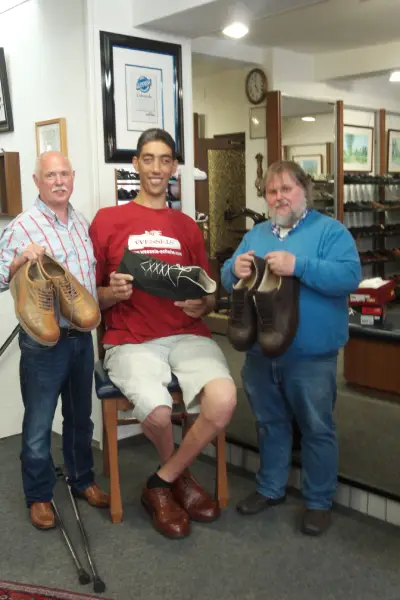
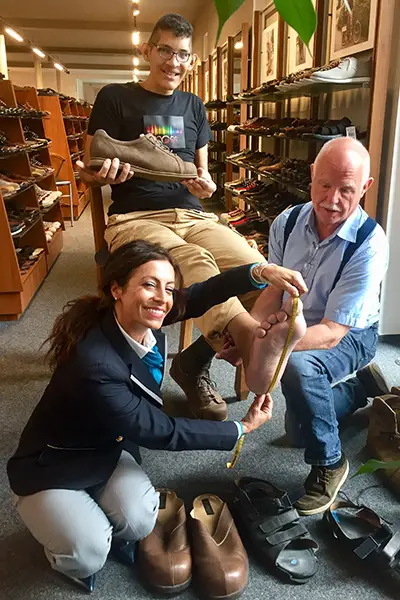
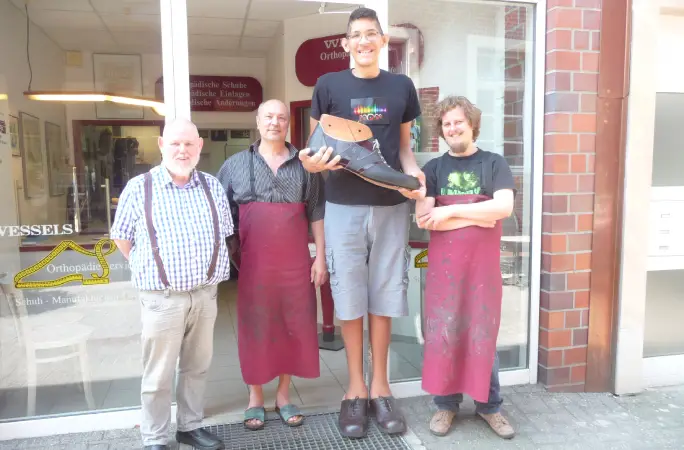
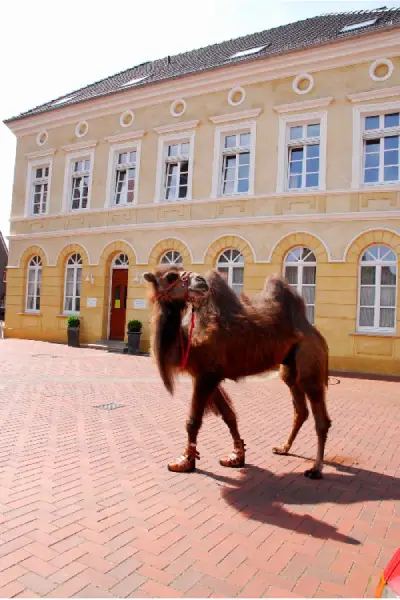
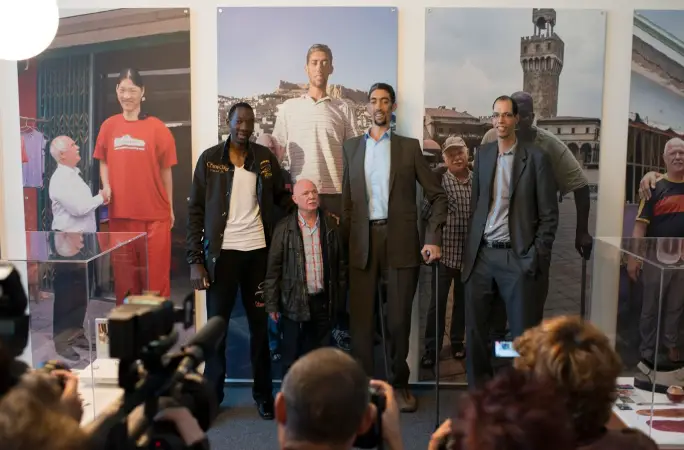


0 Yorumlar